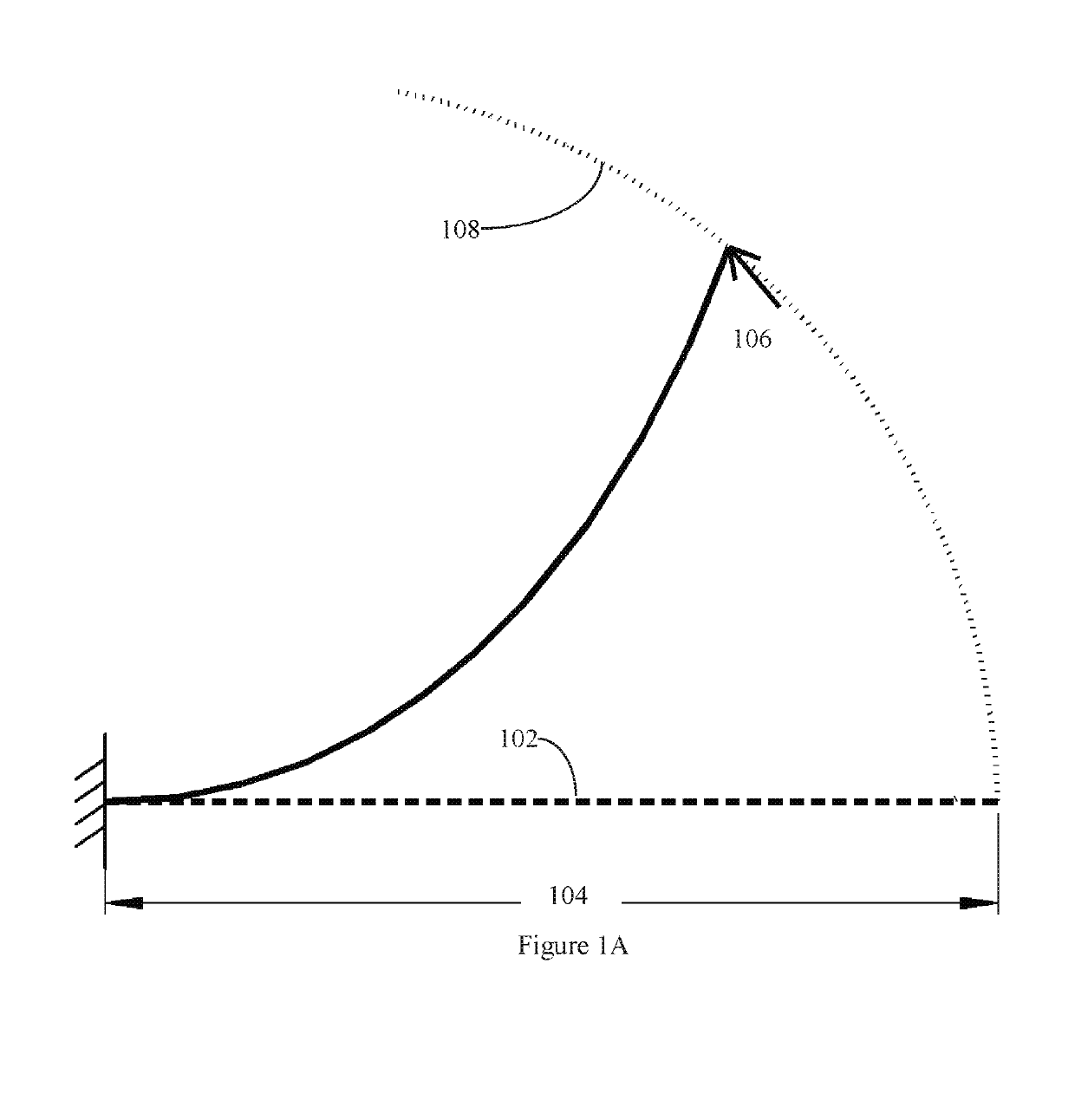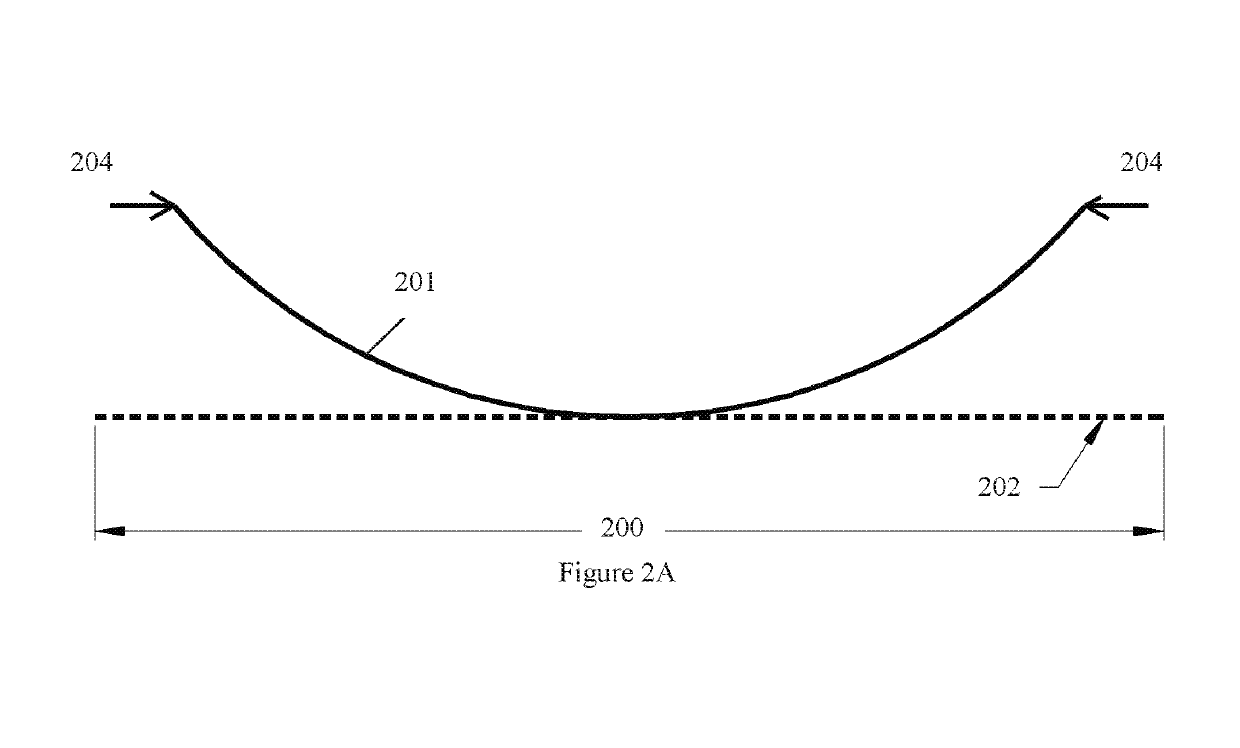Linear bi-stable compliant crank-slider-mechanism
a crankshaft and crank-slider technology, applied in the field of surface, can solve the problems of reducing the assembly time, affecting the performance and cost of the mechanical joints, and affecting the cos
- Summary
- Abstract
- Description
- Claims
- Application Information
AI Technical Summary
Benefits of technology
Problems solved by technology
Method used
Image
Examples
example 1
A. The First Approach
[0243]i. Using the LBCCSM Model
[0244]Design statement: A linear bi-stable mechanism is to be designed. The distance between the two stable points is 25.2 mm, and the mechanism should fit in an area of 43.8 mm by 21 mm. The mechanism is laser cut from a 5 mm thick Polypropylene sheet with design safety factor of 1.
[0245]Design inputs: Δ=25.2 mm, X=43.8 mm, bmax=21 mm, t=5 mm, SF=1. γ=ρ=0.85 and KΘ=2.65 from the PRBM.
[0246]Design Solution:[0247]Step 1: Δ=25.2 mm and X=43.8 mm.[0248]Step 2: From table 1, θ1=30° for low footprint.[0249]Step 3: Using eq. (32), L1=36.03 mm.[0250]Step 4: Using eq. (33), L2=22 mm[0251]Step 5: Using eq. (34), θ2i=55°.[0252]Step 6a: From inputs, bmax / X=0.48, bi=18 mm.[0253]Step 6b: Using FIG. 7A, v=25.[0254]Step 7: Using FIG. 9A, Θ1=7°.[0255]Step 8: Material: Polypropylene, E=1.35 GPa, σy=35 MPa,[0256]Using eq. (35), w1=3.39 mm.[0257]Step 9: Using eq. (16), m=0.61,[0258]Using eq. (36), w1=0.78 mm.[0259]Step 10: Using FIG. 9A, f=0.04.[026...
example 2
B. The Second Approach
[0268]i. Using the LBCCSM Model
[0269]Design statement: A linear bi-stable mechanism needs to be designed. The distance between the two stable points is 55 mm and the mechanism should fit in a length of 70 mm. The actuator that would be used has a maximum force output of 2 N. The mechanism is laser cut from a 7 mm thick Polypropylene sheet with design safety factor of 1.5.
[0270]Design inputs: Δ=55 mm, X=70 mm, Fmax=2 N, t=7 mm, SF=1.5, γ=ρ=0.85 and KΘ=2.65 from the PRBM.
[0271]Design solution:[0272]Step 1: Δ=55 mm and X=70 mm.[0273]Step 2: From table 1, θ1=50° for intermediate footprint.[0274]Step 3: Using eq. (32), L1=66.12 mm.[0275]Step 4: Using eq. (33), L2=57.63 mm[0276]Step 5: Using eq. (34), θ2i=61.5°.[0277]Step 6a: Using eq. (38), J=0.62.[0278]Step 6b: Using FIG. 11A, v=16.[0279]Step 7: Using FIG. 8B, Θ1=6.52°.[0280]Step 8: Material: Polypropylene, E=1.35 GPa, σy=35 MPa, Using eq. (35), w1=4.45 mm.[0281]Step 9: Using eq. (16), m=0.87, Using eq. (36), w1=1...
PUM
 Login to View More
Login to View More Abstract
Description
Claims
Application Information
 Login to View More
Login to View More - R&D
- Intellectual Property
- Life Sciences
- Materials
- Tech Scout
- Unparalleled Data Quality
- Higher Quality Content
- 60% Fewer Hallucinations
Browse by: Latest US Patents, China's latest patents, Technical Efficacy Thesaurus, Application Domain, Technology Topic, Popular Technical Reports.
© 2025 PatSnap. All rights reserved.Legal|Privacy policy|Modern Slavery Act Transparency Statement|Sitemap|About US| Contact US: help@patsnap.com



